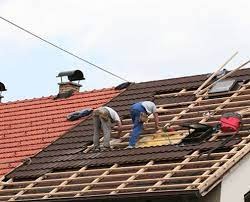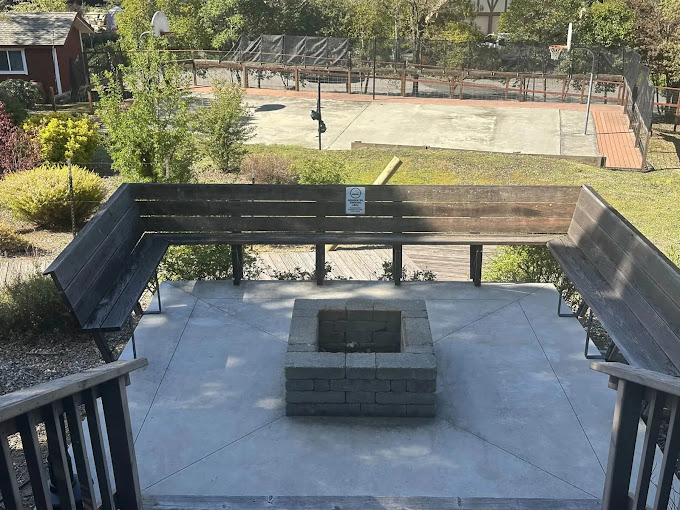When it comes to maintaining your roof, understanding the basics can save you significant time and money in the long run. You might not realize that simple tasks like cleaning your gutters or conducting regular inspections can prevent major issues from arising. By staying proactive about roof care, you can extend its lifespan and enhance your home’s overall integrity. But what specific steps should you take to ensure your roof remains in top condition? Let’s explore the essential practices that can make all the difference.

Importance of Roof Maintenance
Roof maintenance is crucial for extending the lifespan of your home’s roofing system. Regular inspections and timely repairs can prevent minor issues from escalating into costly problems. Make it a habit to check for loose shingles, debris buildup, or signs of water damage at least twice a year.
For optimal roof lifespan, clean gutters regularly to ensure proper drainage and avoid water pooling. Additionally, consider applying protective coatings that can shield against UV rays and weather elements.
Don’t forget to address any overhanging tree branches that could damage your roof during storms. By following these maintenance tips, you not only enhance your roof’s durability but also safeguard your home’s overall integrity and value.
Prioritize maintenance to invest in your home’s future.
Common Roof Problems
When it comes to roof issues, leaks and water damage are among the most common concerns you’ll face.
Additionally, you might notice missing or damaged shingles that compromise your roof’s integrity or poor ventilation that leads to moisture buildup.
Understanding these problems is crucial for effective roof repairs and maintaining a safe, functional roof.
Leaks and Water Damage
One of the most pressing issues homeowners face is leaks and the resulting water damage that can affect both the structure and interior of a house.
Early moisture detection is crucial in preventing extensive damage. Here are four key steps to address leaks and water damage effectively:
- Inspect regularly: Conduct routine checks for water stains on ceilings and walls.
- Identify the source: Trace leaks back to their origin, whether from flashing, gutters, or other areas.
- Repair promptly: Address any issues immediately to prevent further damage.
- Monitor conditions: Keep an eye on potential problem areas, especially after heavy rains or storms.
Missing or Damaged Shingles
Identifying missing or damaged shingles is essential for maintaining the integrity of your roof. Shingles come in various types, including asphalt, wood, and metal, each with different lifespans.
Regularly inspect your roof for signs of wear, such as curled, cracked, or broken shingles. These issues can compromise your roof’s effectiveness, leading to leaks and further damage.
If you notice missing shingles, replace them promptly to prevent moisture from seeping beneath the roofing material. Consider the shingle type when replacing, as this ensures compatibility and maintains the roof’s aesthetic appeal.
Addressing shingle issues quickly can significantly extend your roof’s lifespan and enhance its overall performance, safeguarding your home from potential water damage.
Poor Ventilation Issues
Poor ventilation can lead to a host of roofing issues that many homeowners might overlook. Adequate airflow is crucial for maintaining the integrity of your roof and preventing costly repairs.
Different ventilation types, such as ridge vents, soffit vents, gable vents, and turbine vents, can significantly enhance airflow improvement. Here are some common problems associated with poor ventilation:
- Heat buildup: Increased temperatures can damage roofing materials and cause premature aging.
- Moisture accumulation: Trapped moisture can lead to mold growth and wood rot.
- Ice dam formation: Improper airflow can cause melting snow to refreeze, leading to ice dams.
- Increased energy costs: Inefficient ventilation can force your HVAC system to work harder, raising energy bills.
Addressing ventilation issues is essential for prolonging your roof’s lifespan.
Routine Inspections
Routine inspections are essential for maintaining the integrity and longevity of your roof. By conducting regular assessments, you can identify potential issues before they escalate into costly repairs.
It’s recommended that you schedule these inspections at least twice a year, ideally in spring and fall, to align with seasonal changes. During each inspection, focus on checking for signs of wear, damage, or leaks, and assess the condition of flashing, shingles, and gutters.
Document your findings to help track the roof’s condition over time. Incorporating routine maintenance tasks, such as sealing gaps or replacing missing shingles, can significantly extend your roof’s lifespan.
Cleaning and Debris Removal
Cleaning and debris removal are critical components of roof maintenance that can prevent long-term damage.
Regular upkeep not only enhances your roof’s appearance but also safeguards its integrity.
Here are four essential tasks to include in your cleaning regimen:
- Gutter Cleaning: Remove leaves and debris to ensure proper water drainage and prevent clogs that can lead to leaks.
- Moss Removal: Check for moss growth, as it retains moisture and can damage shingles. Use a moss-killing solution to eliminate it effectively.
- Debris Removal: Clear branches and other debris from the roof surface to avoid punctures and blockages.
- Inspection: After cleaning, inspect your roof for any signs of damage or wear that may need attention.
Implement these steps regularly to extend your roof’s lifespan.
Repairing Minor Leaks
Minor leaks can cause significant damage if not addressed promptly, making it essential for homeowners to know how to tackle them effectively.
Start with leak detection; inspect your roof regularly for telltale signs like water stains or damp spots. Once you’ve identified the leak’s origin, you can employ various patch techniques to seal it.
For small cracks, use roofing cement or a polyurethane sealant, applying it generously over the affected area. For larger gaps, consider using a patch made from a piece of matching roofing material, securing it with adhesive or screws.
Ensure the patch overlaps the damaged area adequately to prevent future leaks. Regular maintenance and prompt repairs will extend your roof’s lifespan, safeguarding your home from further damage.
Addressing Missing Shingles
When you notice missing shingles on your roof, it’s crucial to identify their location and assess the extent of the damage.
Promptly repairing or replacing these shingles can prevent further issues, such as leaks and structural damage.
Understanding the steps involved will help you maintain the integrity of your roofing system.
Identifying Missing Shingles
Identifying missing shingles is crucial for maintaining the integrity of your roof and preventing potential water damage. Regular inspections help you catch issues early.
Here are key steps to identify missing shingles effectively:
- Conduct Visual Inspections: Regularly check your roof from the ground or a ladder for any discrepancies in shingle colors.
- Look for Curling or Lifting: Notice if any shingles appear to be lifting; this could indicate missing ones nearby.
- Check After Storms: Following severe weather, inspect your roof for any signs of displacement due to wind or debris.
- Evaluate Installation Techniques: Familiarize yourself with proper installation techniques, ensuring shingles are aligned correctly and securely.
Repairing or Replacing Shingles
Addressing missing shingles promptly is essential to prevent further damage to your roof and home.
Start by assessing the extent of the damage and determining your shingle replacement options. If only a few shingles are missing, you may opt for a simple replacement. For this, choose shingles that match your current roof.
Utilize effective shingle installation techniques, such as using roofing cement to secure the new shingles in place and ensuring proper overlap to maintain water resistance.
If a larger area is affected, a full roof replacement may be necessary. Always prioritize safety and consider hiring a professional if you’re unsure about the repairs.
Taking these steps will help extend your roof’s lifespan and protect your investment.
Preventing Ice Dams
To effectively prevent ice dams, it’s crucial to maintain a well-insulated and ventilated roof. Ice dam formation occurs when warm air from your home rises through the roof, causing snow to melt and refreeze at the eaves.
To combat this, consider the following strategies:
- Upgrade Insulation: Ensure your attic has sufficient insulation to minimize heat loss.
- Enhance Ventilation: Install ridge vents and soffit vents to promote airflow and maintain a consistent roof temperature.
- Clear Roof Snow: Regularly remove snow to reduce the amount that can melt and refreeze.
- Seal Air Leaks: Identify and seal any gaps where warm air might escape into the attic.
Professional Inspection Benefits
Maintaining a well-insulated and ventilated roof helps prevent ice dams, but even with these precautions, issues can still arise. That’s where professional inspections come in.
Regular inspections, ideally twice a year, can identify problems early, saving you costly repairs down the line. An experienced inspector, equipped with the right qualifications, can spot hidden damage that may escape your notice.
They’ll assess areas like flashing, shingles, and drainage systems, ensuring everything functions properly. When you hire a qualified inspector, you’re not just getting a service; you’re investing in the longevity of your roof.
Knowing the inspection frequency and understanding the inspector’s qualifications can significantly enhance your roof’s performance and extend its lifespan. Don’t overlook this crucial step in roof maintenance.
Seasonal Maintenance Checklist
A well-executed seasonal maintenance checklist is essential for ensuring your roof remains in optimal condition year-round.
By conducting regular seasonal inspections, you’re addressing potential issues before they escalate.
Keep in mind weather considerations, as they can impact your roof’s integrity.
Here’s a concise checklist to follow:
- Inspect Shingles: Look for missing or damaged shingles that could lead to leaks.
- Clean Gutters: Remove debris to ensure proper drainage and prevent water damage.
- Check Flashing: Examine areas around chimneys and vents for any signs of wear or gaps.
- Evaluate Insulation: Ensure your attic insulation is adequate to prevent ice damming and heat loss.
Why You Choose Pure Energy Roofing Company
Serving Brighton, Ann Arbor, and the surrounding areas, Pure Energy Roofing Company is a family-operated business owned by Adrian Beavers and Matt Masters. Known for their expertise in roof replacement, repair, storm damage restoration, gutter replacement, and attic insulation, they are a trusted name in the roofing industry. Their Owens Corning Certified Contractor designation reflects their dedication to premium materials and superior service. With a focus on professionalism and customer care, they consistently exceed expectations.
Conclusion
In conclusion, keeping your roof in tip-top shape isn’t just a chore—it’s an absolute necessity! Think of it as giving your home a superhero cape, protecting it from the elements and saving you from financial doom. By regularly inspecting, cleaning, and addressing issues like leaks and missing shingles, you’re not just extending your roof’s life; you’re ensuring it stands strong against Mother Nature’s wrath. So grab that ladder and get to work—your roof will thank you with years of durability!
